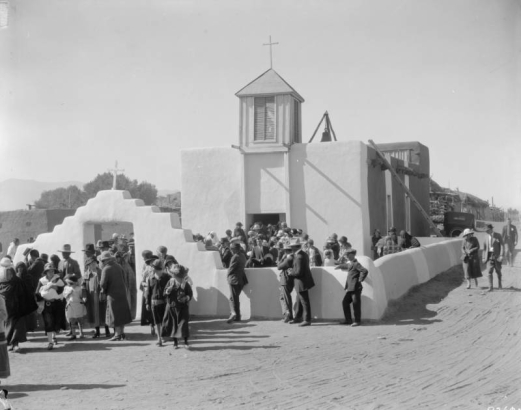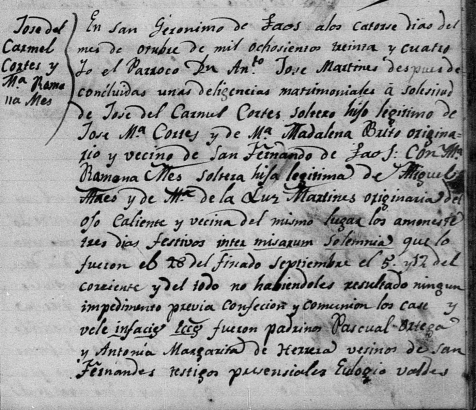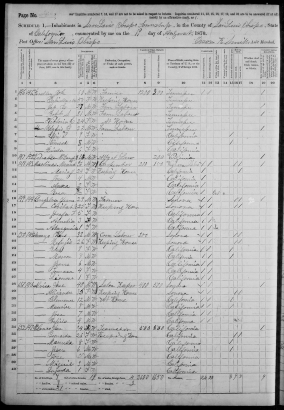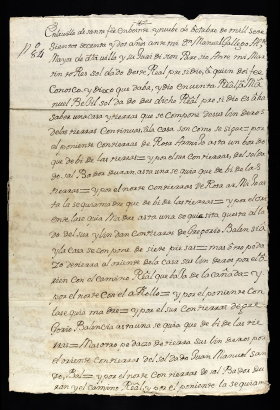Will The Real José, María, and Juan Please Stand Up?
The proliferation of common names such as José, Juan, and María (Joseph, John, and Mary) can be found in the historical record throughout Spanish-speaking countries, especially in the 17th, 18th, and 19th centuries. In modern Spain, it is custom for a person to have only one name and two surnames, such as Pablo Flores Rodríguez or Ana Reyes Martínez. Compound names, such as Miguel Ángel, are treated as one name: Miguel Ángel Sánchez García. In Spanish American countries, it is common for people to have both a first and middle name, in addition to their two last names. For more information on two surnames in Hispanic culture, click here to read a previous blog “Dos Apellidos: When Families Have Two Surnames” covering the topic.
In the past, it was common for girls to have “María” as their first name and boys to have “José” or “Juan” as their first name. It was so common that many times people went by their middle name instead of their first names which can lead to discrepancies. For example, in marriage and baptism records sometimes the baptism records contain the first and middle names while the marriage record only records the middle name. Sharp researchers can confirm the right person by verifying parents’ names and other details.
Tracing Siblings
In addition to tracing a direct lineage, it is important to trace an ancestor’s siblings to help break through brick walls, build a more complete portrait of your family, and fill in missing holes. For example, a customer was once stuck researching ancestors in Taos, NM, in the 1830s where baptism records only listed the names of the parents and marriage records only the bride a groom. Because they could not locate the grandparents names, they were stuck. But, by researching siblings they were able to find baptism records which listed grandparents’ names which and took the family tree back to the 1790s in Abiquiú, NM. The parents’ marriage was recorded there and it turns out that the family had relocated from Abiquiú to Taos. Other records that can contain information for siblings include census records, draft cards, obituaries, wills, court and divorce records. Good researchers fill out family group sheets for each family, including information about siblings.
Paleography
Many documents researchers encounter in Hispanic and southwest genealogy research are handwritten in Spanish with archaic terms, abbreviations, and old spelling rules, especially during the colonial and territorial periods. When consulting extractions, indexes, and modern records, this may not be a problem. Older, original records may be harder to understand. A familiarity with paleography, the study of old writing forms, is beneficial. For example, it is good to know that some priests and clerks abbreviated 9embre for the month of November, Jsph means José, and that Guadalupe is a male and female name.
Not All Records Are Available Online
On a final note, while many records are available on FamilySearch, Ancestry, and other websites like the Archives of the Indies in Sevilla, many records are only in paper or microfilm at university, state, national libraries and archives. Just because information can’t be found online doesn’t mean it doesn’t exist — genealogists should expand their searches by casting a wide net in their research.
This series is designed to help customers deepen their research while learning about Hispanic cultural traditions and customs they may encounter in their family history and genealogy records.





Comments
I am looking for my
I am looking for my grandfathers mother and father they were born in Ocate new mexico Lee O. Martinez 12/7/1910 can you help me ? Donna Martinez720-327-1777
Check out the Native American
Check out the Native American Research Guide published by the library at the Indian Pueblo Cultural Center and hosted on the University of New Mexico website for resources on how to start researching your family tree.
Add new comment